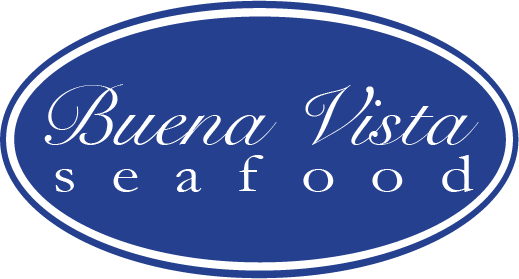Scottish Seas Scallops
Wild King Scallops / Coquille St. Jacques / Great Scallop
Pecten maximus
King Scallops, also referred to as Great Scallops or Coquille St. Jacques, are native to the North and Irish Seas. They have been a cornerstone of classic French and European cooking since at least the 18th century thanks to their fine texture and distinguished taste. Now, after many years of market absence, the Scottish King Scallops are back available to US-based chefs.
Market Names: Great Atlantic Scallop, Great Scallop, Hotate, King Scallop, Scallop
Size: The majority of the scallops are in the 10/20 range. These are not treated in any way -nothing is added (not even a little bit) - so this is the most commonly harvested size.
Color: There will be some variation in color, depending mainly on the fishing ground. This is a natural occurance and since these scallops have not treatment or additives, it is the pure natural color.
QR Code - on each 1 kg box of King Scallops has a scan-able code for up to date vessel landing information.
Texture / Culinary
Silky, firm, holding its shape when sliced thin
Sears very well in a pan or on the grill
Sashimi grade - completely chem and salt free. Clean with NO metallic aftertaste (because they have NO treatments)
Available year round
The fleet is nomadic, and weather permitting can supply January – December.
Species Description
Large fluted scallop with a white and pink hued shell. King scallops (pecten maximus) are referred to as ‘scallops’ in the market as to not to be confused with the smaller queen scallop Aequipecten opercularis which is commonly referred to as ‘queenies’ in Scotland and the UK.
About Scallops
Pecten maximus become sexually mature at around 2–3 years old and when they reach 80 to 90 mm in shell length. Where they are not exploited, they may live for more than 20 years and reach shell lengths of more than 200mm. Scallops in shallow water grow faster than those in deeper water; the growth halts in winter and starts again in spring, producing concentric growth rings which are used to age the scallops.
Size: U-10/20
Year Round Availability
100% Chem-Free
Shelf life: 14-days from pack out
Packed in 1 kg (2.2 lb) tubs
Sustainability & Regulations
In 2018 the Scottish, Northern Irish and Isle of Man industry came together to commission a MSC managed 5 year action plan to improve the scallop sector’s science and management plans with a medium to longer term goal of enabling the fishery to be brought forward for full MSC assessment. The first annual update (April 2020) is attached along with an in year update for year 2. Year 2’s final report should be available in a couple of months. Information on this is also available through this link https://fisheryprogress.org/fip-profile/uk-irish-sea-west-scotland-and-north-sea-great-atlantic-scallop-dredge
Main Fishing Regulations
A minimum landing size of 100mm (smaller than the Scottish MLS of 105mm).
Limits on the number (up to 10) and size (up to 8.8m) of dredges and tow bars. Under the Scottish Scallop Order, fishing with more than 8 dredges per side or tow bars over 7.5m within 12 nautical miles is only permitted if a vessel has installed Remote Electronic Monitoring equipment, which will allow improved monitoring of compliance in scallop fisheries.
A ban on hydraulic, suction and ‘French’ dredges, which are more damaging to seabed habitats.
A curfew: scallop fishing is prohibited between 9pm and 6am to protect mobile benthic species. Closed areas to scallop dredging to protect horse mussels and seagrass.
- Scallop Association
- Scottish Fishermen’s Federation
- Scottish Whitefish Producers Association
- Scottish Scallop Divers Association
- Marine Scotland Science Compliance and Policy
- Scottish Natural Heritage
Fishing is hard work and the North Sea is no joke
Cooperative of Scottish Captains and Ports
Historically, close to 70% of the Scottish/UK scallop fishery has been exported to France, Spain and Italy. However, due to Brexit, there is a new opportunity for export to the USA.
Our wild Scottish scallops are brought to the US market by a cooperative of Scottish Fishermen's Associations from the West, East and Orkney Island. These fishermen are working together to provide a full portfolio of seafood options to the US market. Through this co-op, we have full traceability and accountability for all the catch coming to the US market.
These fishermen have understood that they must work together if they are to properly manage and showcase their seafood in the competitive US market. Distributors and chefs can trace their product back to specific vessels and captains, but the catch can be marketed as Scottish Seas year-round.
Fishery Location & Fleet
There are principally two fleets of Scottish mechanical dredgers targeting scallops: the inshore fleet and the offshore nomadic fleet. The inshore fleet are vessels typically under 15m in length, with 3-4 crew and normally focusing effort within inshore waters (within 12 nautical miles). The nomadic offshore fleet are larger (>15m in length) and travel around the UK predominately targeting offshore grounds, with 5-7 crew and fishing for longer trips in waters around the United Kingdom
General scallop fishery map: blue = Scottish vessels & red = UK vessels






